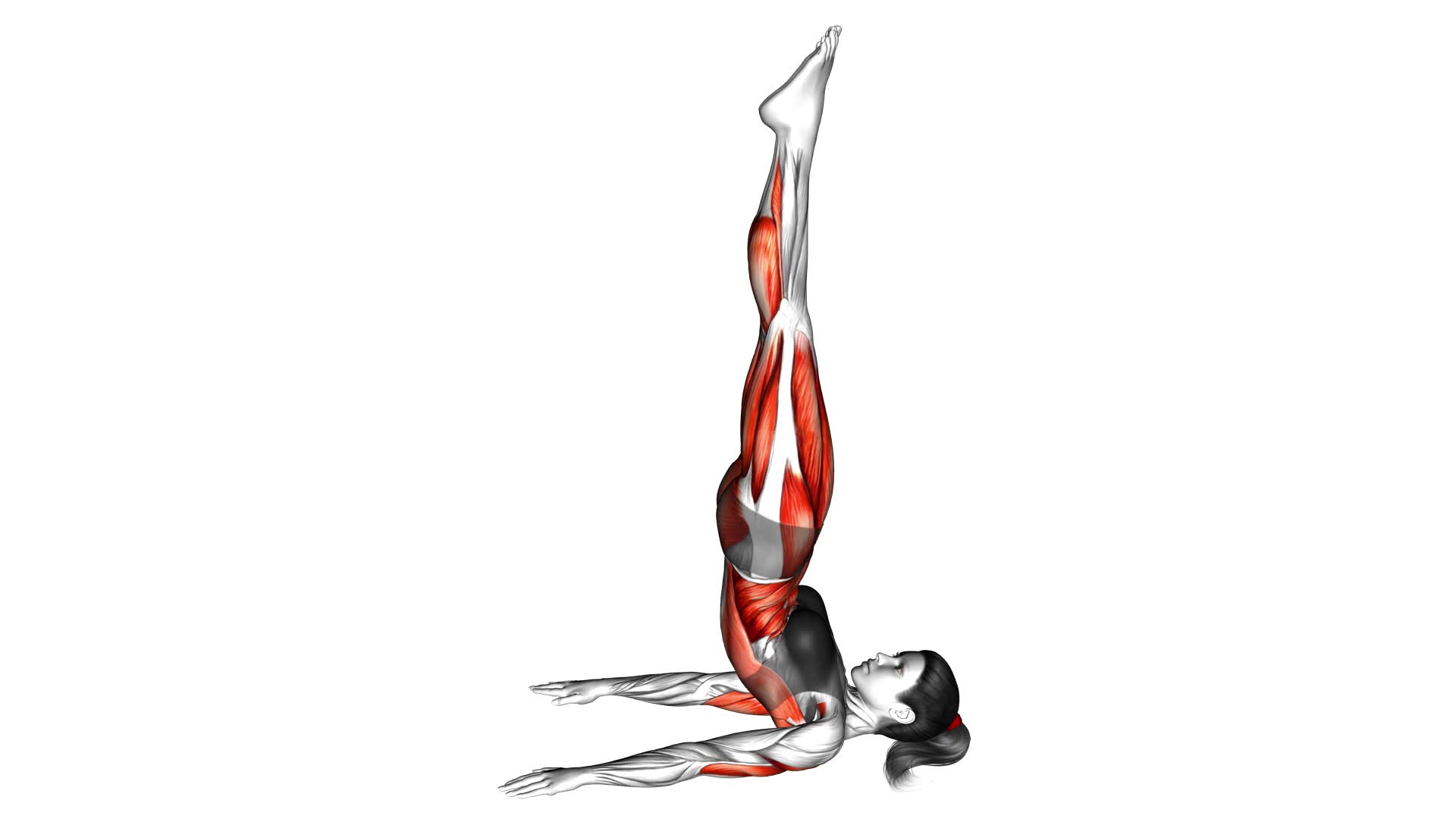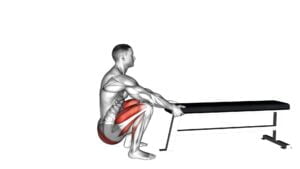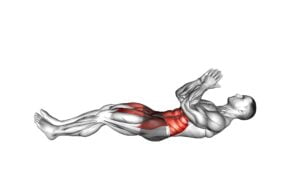JackKnife (female) – Video Exercise Guide & Tips

Get ready to tone your abs with the JackKnife exercise!
Watch This Exercise Video
In this video exercise guide, we'll show you how to perform this effective move that targets your core muscles.
Whether you're a beginner or advanced, our tips and modifications will help you get the most out of your workouts.
So grab a mat and let's start sculpting those abs today!
Key Takeaways
- The JackKnife exercise is highly effective for improving core strength and stability.
- It targets various abdominal muscles, hip flexors, and lower back muscles.
- Proper form and technique are important to avoid common mistakes such as rounding the back and using momentum.
- There are modifications and progressions available to challenge and engage different muscle groups.
Benefits of the JackKnife Exercise
You should regularly incorporate the JackKnife exercise into your workout routine to maximize its benefits. This exercise is highly effective in improving core strength and stability, making it an essential addition to any fitness regimen. The JackKnife primarily targets the abdominal muscles, including the rectus abdominis, obliques, and transverse abdominis, but it also engages the hip flexors and lower back muscles.
One of the great aspects of the JackKnife exercise is that it offers various variations to challenge and engage different muscle groups. For instance, you can perform the exercise on a stability ball to increase the difficulty and further engage your core muscles. Another variation is the decline JackKnife, where you position your feet on an elevated surface, such as a bench, and lift your hips towards the ceiling. This variation intensifies the activation of your lower abdominal muscles.
Incorporating the JackKnife exercise into your routine won't only strengthen your core but also improve your posture and stability. As your core becomes stronger, you'll notice increased support and control during other exercises and daily activities. Remember to start with proper form and gradually increase the difficulty as you progress. Consult with a fitness professional to ensure you're performing the exercise correctly and to receive personalized recommendations based on your fitness level and goals.
Equipment and Set-Up for the JackKnife Exercise
To perform the JackKnife exercise, gather the necessary equipment and set it up properly. Here's what you'll need:
- Exercise Mat: Find a comfortable and supportive exercise mat to provide cushioning for your body during the exercise. This will help prevent any discomfort or strain on your back and joints.
- Stability Ball: Using a stability ball adds an extra challenge to the JackKnife exercise. It requires more core stability and engages additional muscles. Choose a stability ball that's the appropriate size for your height.
- Proper Clothing: Wear comfortable and breathable clothing that allows for a full range of motion. This will ensure that you can perform the exercise correctly without any restrictions.
- Clear Space: Make sure you have enough space around you to fully extend your body during the exercise. Clear away any obstacles or furniture that may hinder your movement.
When setting up for the JackKnife exercise, remember to position the stability ball on the exercise mat. Place it in a stable position so that it doesn't roll or move while you're performing the exercise.
By gathering the necessary equipment and setting it up properly, you can ensure a safe and effective JackKnife workout.
It's also important to note some common mistakes in the JackKnife exercise. Avoid these to maximize the benefits and reduce the risk of injury:
- Rounding the back: Keep your spine in a neutral position throughout the exercise. Avoid rounding your back, as this can strain your lower back.
- Using momentum: Focus on controlled movements rather than relying on momentum to perform the exercise. This will engage your core muscles more effectively.
- Lifting the hips too high: Lift your hips only to the point where your body forms a straight line. Lifting them too high can create unnecessary strain on your lower back.
- Holding your breath: Remember to breathe throughout the exercise. Holding your breath can increase tension in your body and make the exercise more challenging than necessary.
Proper Form and Technique for the JackKnife Exercise
To perform the JackKnife exercise with proper form and technique, focus on maintaining a neutral spine and engaging the core muscles throughout the movement. This exercise targets the abdominal muscles, particularly the rectus abdominis, and can help improve core stability and strength.
To begin, lie flat on your back with your arms extended overhead and your legs straight. Inhale deeply, then exhale as you lift your upper body and legs off the ground simultaneously. As you do this, bring your arms and legs together towards the center of your body, forming a V-shape. Keep your lower back pressed into the floor and avoid arching it.
One common mistake to avoid is using momentum to swing your body up rather than relying on your core strength. This can reduce the effectiveness of the exercise and increase the risk of injury. Instead, focus on controlled movements and engage your abdominal muscles to lift your body.
To add variations and alternatives to the JackKnife exercise, you can try the modified JackKnife, which involves bending your knees and bringing them towards your chest while keeping your upper body lifted off the ground. This variation is suitable for beginners or those with lower back issues.
Remember to always listen to your body and modify the exercise as needed. If you experience any pain or discomfort, stop immediately and consult with a fitness professional.
Modifications and Progressions for the JackKnife Exercise
To modify and progress the JackKnife exercise, you can incorporate variations that target different muscle groups and challenge your core strength. Here are some alternative exercises and common mistakes to avoid:
- Swiss Ball Pike: Instead of performing the JackKnife on the floor, use a Swiss ball. Start in a plank position with your feet on the ball and your hands on the ground. Engage your core and lift your hips towards the ceiling, rolling the ball towards your hands. This exercise increases instability, activating more muscles in your core.
- Decline JackKnife: Place your feet on an elevated surface, such as a bench or step. From a plank position, bring your knees towards your chest, engaging your abs. This modification adds extra resistance and challenges your core even more.
- Knee Tucks: If you find the JackKnife too challenging, try knee tucks instead. Start in a seated position with your knees bent and feet on the ground. Lean back slightly, engage your core, and lift your knees towards your chest. This exercise is a great way to build strength before progressing to the full JackKnife.
- Common Mistakes to Avoid: Be mindful of these common mistakes when performing the JackKnife exercise: not engaging your core, using momentum instead of controlled movements, and lifting your head or neck too much. Focus on maintaining proper form and technique throughout the exercise to maximize its effectiveness.
Tips for Getting the Most Out of Your Jackknife Workouts
To maximize your results and get the most out of your Jackknife workouts, focus on maintaining proper form and technique throughout each repetition. This will ensure that you're targeting the right muscles and avoiding common mistakes that can hinder your progress.
One of the most common mistakes people make during Jackknife exercises is rushing through the movement. It's important to perform each repetition slowly and with control, engaging your core muscles and maintaining proper alignment.
Another common mistake is lifting your hips too high or too low. To prevent this, imagine a straight line from your head to your heels and focus on keeping your body in a straight, plank-like position.
In addition to maintaining proper form, incorporating variations and alternatives can help challenge your muscles in different ways and prevent boredom.
One variation you can try is the Swiss ball Jackknife. Instead of performing the exercise on the floor, place your feet on a Swiss ball and lift your hips towards the ceiling, rolling the ball in towards your chest. This adds an extra stability challenge and increases the engagement of your core muscles.
Another alternative is the standing Jackknife. Stand with your feet hip-width apart, lift one knee towards your chest while simultaneously bringing your opposite elbow down to meet it. This exercise targets your obliques and improves balance and coordination.
Frequently Asked Questions
How Many Calories Does the Jackknife Exercise Burn?
The jackknife exercise is an effective way to burn calories and strengthen your core muscles. It's important to perform the exercise correctly to maximize its benefits. By engaging your abs and lifting your legs and upper body simultaneously, you can target multiple muscle groups and increase calorie burn.
For advanced fitness levels, there are variations of the jackknife exercise that can challenge your core even more. Incorporating these variations into your workout routine can help you reach your fitness goals.
Can the Jackknife Exercise Help Me Lose Belly Fat?
The jackknife exercise is a great way to target your abdominal muscles and can definitely help with losing belly fat. This exercise engages the rectus abdominis, obliques, and hip flexors, all of which contribute to a toned midsection.
Additionally, it can be modified for individuals with lower back pain by using a stability ball or performing a modified version on a mat.
Remember to always consult with a professional before starting any new exercise routine.
How Often Should I Do the Jackknife Exercise to See Results?
To see results from the jackknife exercise, it's important to do it regularly. How often should you do it? Well, consistency is key! Aim for at least 3-4 times a week.
Is the Jackknife Exercise Suitable for Beginners?
The jackknife exercise can be a challenging move, especially for beginners. It requires a certain level of core strength and stability.
However, there are modifications you can try to make it more accessible. For example, you can start by bending your knees and bringing them closer to your chest instead of fully extending your legs.
Alternatively, there are other exercises that are more suitable for beginners, such as planks or crunches, which also target the core muscles.
Can the Jackknife Exercise Help Improve My Flexibility?
Incorporating the jackknife exercise into your daily workout routine can bring numerous benefits to your flexibility.
By properly performing this exercise, you can maximize your flexibility gains.
The jackknife exercise targets your core muscles, including your abs and lower back, while also engaging your hip flexors and hamstrings.
This movement helps to stretch and strengthen these muscle groups, ultimately improving your overall flexibility.
With consistent practice, you'll notice increased range of motion and improved flexibility in your daily activities.
Conclusion
In conclusion, the JackKnife exercise is a highly effective workout that offers numerous benefits for both men and women.
By incorporating this exercise into your fitness routine, you can strengthen your core muscles, improve your posture, and enhance your overall stability and balance.
Remember to maintain proper form and technique, and consider modifying or progressing the exercise to suit your fitness level.
With these tips in mind, you can maximize the results of your JackKnife workouts and achieve your fitness goals.

Author
Years ago, the spark of my life’s passion ignited in my mind the moment I stepped into the local gym for the first time. The inaugural bead of perspiration, the initial endeavor, the very first surge of endorphins, and a sense of pride that washed over me post-workout marked the beginning of my deep-seated interest in strength sports, fitness, and sports nutrition. This very curiosity blossomed rapidly into a profound fascination, propelling me to earn a Master’s degree in Physical Education from the Academy of Physical Education in Krakow, followed by a Sports Manager diploma from the Jagiellonian University. My journey of growth led me to gain more specialized qualifications, such as being a certified personal trainer with a focus on sports dietetics, a lifeguard, and an instructor for wellness and corrective gymnastics. Theoretical knowledge paired seamlessly with practical experience, reinforcing my belief that the transformation of individuals under my guidance was also a reflection of my personal growth. This belief holds true even today. Each day, I strive to push the boundaries and explore new realms. These realms gently elevate me to greater heights. The unique combination of passion for my field and the continuous quest for growth fuels my drive to break new ground.







